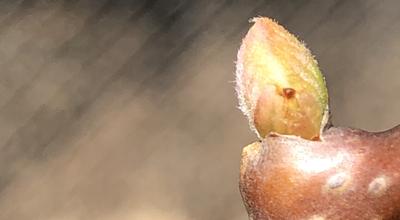
In 1869, newspaperman Horace Greeley supposedly proclaimed: “I would not live in Minnesota because you can’t grow apples there.” Nevertheless, Minnesota produced almost 25 million pounds of apples in 2014. In fact, the University of Minnesota’s fruit breeding program has worked since the 1860s to prove Greeley wrong and to produce new cultivars of apples, strawberries, plums, and many other fruits that could survive the harsh and variable Minnesota winters. Much of the university’s success can be traced back to one man: Wilfred Gordon Brierley.
Dr. Brierley’s career at the University of Minnesota began in 1913 and spanned over forty years, in which time he studied and bred apples, raspberries, strawberries, cherries, plums, grapes, blueberries, and even walnuts, hickory, and pecans. He was also a proficient publisher in scholarly journals as well as in the Minnesota Horticulturist magazine, a precursor to today’s Northern Gardener magazine.
In 2017, graduate student Jared Rubinstein and Dr. Emily Hoover of the Department of Horticultural Sciences, as well as science librarian Julie Kelly published a biographical review of Dr. Brierley in the Journal of the American Pomological Society. The review included included, for the first time, a complete bibliography of Dr. Brierley’s publications, which is are now publicly available through the University of Minnesota’s Digital Conservancy.
If you’re interested in the history of cold hardiness research or in the origins of some of our best cold hardy fruit varieties, take a look at some of Dr. Brierley’s work.
To read more about Dr. Brierley himself, you can read the entire article, entitled W.G. Brierley: Pioneering Pomologist of the Prairie, in the April 2017 edition of the Journal of the American Pomological Society.



